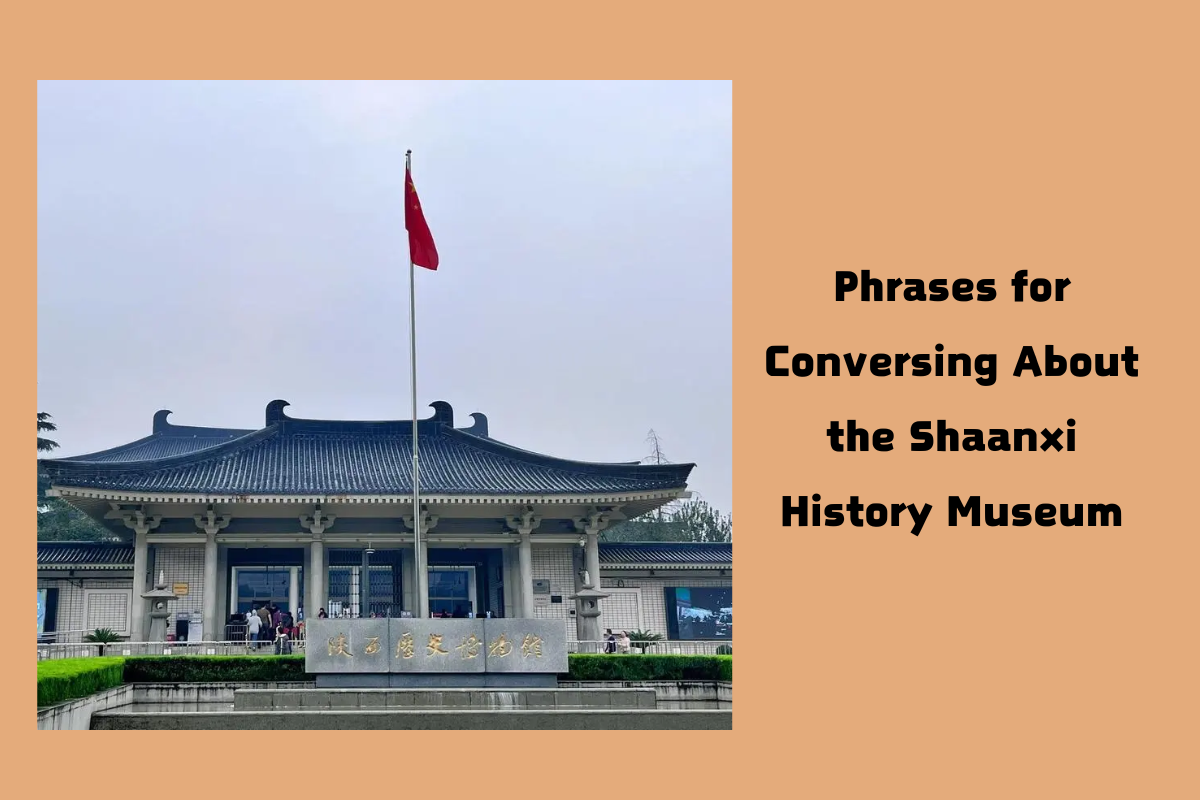Phrases for Conversing About the Shaanxi History Museum
When visiting the Shaanxi History Museum, you'll encounter a wealth of cultural treasures, each with its own unique story. To fully appreciate the significance of these artifacts, it's helpful to engage in conversations that highlight their historical and artistic value. Below are some common phrases and dialogues you might use when discussing the exhibits, helping you connect more deeply with the rich history of Shaanxi province and its contributions to Chinese civilization.

Scene 1: Discussing Terracotta Warriors
Are these the original Terracotta Warriors?
这些是真正的兵马俑吗?
Zhèxiē shì zhēnzhèng de Bīngmǎyǒng ma?
Yes, these are authentic, unearthed in Xi’an.
是的,这些是真品,在西安出土的。
Shì de, zhèxiē shì zhēnpǐn, zài Xī'ān chūtǔ de.
How many warriors were found?
发现了多少个兵马俑?
Fāxiàn le duōshǎo gè Bīngmǎyǒng?
Over 8,000 warriors have been unearthed so far.
到目前为止,已经出土了超过八千个兵马俑。
Dào mùqián wéizhǐ, yǐjīng chūtǔ le chāoguò bā qiān gè Bīngmǎyǒng.
Scene 2: Examining Han Dynasty Relics
What’s special about this Han Dynasty mirror?
这个汉朝的镜子有什么特别之处?
Zhège Hàn cháo de jìngzi yǒu shénme tèbié zhī chù?
This mirror is known for its intricate engravings and historical value.
这面镜子以其复杂的雕刻和历史价值而著称。
Zhè miàn jìngzi yǐ qí fùzá de diāokè hé lìshǐ jiàzhí ér zhùchēng.
Is it made of bronze?
它是青铜做的吗?
Tā shì qīngtóng zuò de ma?
Yes, it’s a bronze mirror with detailed craftsmanship from the Han period.
是的,这是汉代的青铜镜,工艺非常精细。
Shì de, zhè shì Hàn dài de qīngtóng jìng, gōngyì fēicháng jīngxì.
Scene 3: Learning About Tang Dynasty Pottery
Is this pottery from the Tang Dynasty?
这些陶器是唐朝的吗?
Zhèxiē táoqì shì Táng cháo de ma?
Yes, it’s from the Tang Dynasty and reflects the vibrant culture of that time.
是的,这是唐朝的,反映了当时的繁荣文化。
Shì de, zhè shì Táng cháo de, fǎnyìng le dāngshí de fánróng wénhuà.
What kind of glaze is used on these pieces?
这些器物用了什么釉?
Zhèxiē qìwù yòng le shénme yòu?
They are glazed with sancai, a popular tri-color technique from the Tang era.
它们使用了唐朝流行的三彩釉技术。
Tāmen shǐyòng le Táng cháo liúxíng de sāncǎi yòu jìshù.